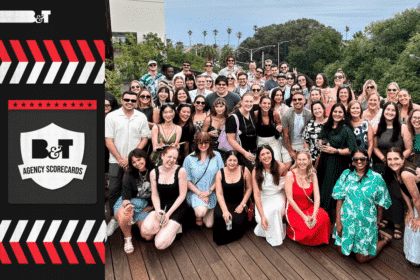After an unprecedented year of challenges, iStock research has shown that Australians and New Zealanders are increasingly expecting businesses to communicate with greater empathy, both in terms of a brand’s language as well as its visuals.
Celebrated globally on April 22, Earth Day presents a timely opportunity for businesses to put empathy into practice, iStock explains, by intentionally choosing visuals which reflect the sustainability and environmental concerns of today’s consumer.
Sustainability is a major force in decision-making, with 85 per cent of people in Australia and New Zealand expecting businesses to be environmentally aware in their visual communications, a fact revealed by iStock’s Visual GPS research.
“The ANZ consumer has been sustainably driven for a number of years now, but there is even more demand than ever before for businesses to show how they are addressing climate change and creating a more sustainable future,” iStock’s head of creative insights, Kate Rourke, said.
At iStock, Australian and New Zealander searches for ‘sustainable home’ and ‘environmental sustainability’ rose significantly in 2020, along with terms like ‘care’ and ‘gratitude’.
“The familiar visual clichés typically used to convey environmental issues—the lone polar bear or hands cupping a sapling—are now too abstract to stand out in today’s crowded visual landscape,” Rourke said.
To support businesses of all sizes, iStock created guidelines outlining best practices when selecting sustainability photos, videos and illustrations—whether a business is seeking to convey the steps they are taking towards setting and achieving sustainable goals or seeking to better connect with customers by showing how people make sustainable choices in their own lives.
Here are three takeaways from iStock to keep in mind:
Tell the human story

Move away from abstract visual metaphors and clichés. Intentionally take steps to make sustainability personal, authentic moments conveying human connection and emotion resonate more powerfully with ANZ consumers.
Although businesses often address sustainability and D&I as two separate issues, these should be intertwined whenever possible.
Climate change affects everyone, and iStock’s Visual GPS research shows that 81 per cent of Australian and New Zealanders see themselves as eco-friendly, meaning that people of all races, ages and genders care about sustainability-related issues.
It is imperative to include groups who may have previously been underrepresented at all intersections of identity including gender, race, ethnicity, age, ability, gender identity, sexual orientation and culture, in your visual communications.
Tell real visual stories of what people are doing to protect the environment

Australia and New Zealand has pledged to reach carbon neutrality by at least 2050. The ACT has gone one better, moving to 100 percent renewable energy from 1 January, with a commitment to eliminate its carbon footprint by 2045.
Likewise, iStock’s Visual GPS research revealed that customers do many different things to support the environment, depending on their lifestyle—from recycling to making their home energy efficient, to adopting a vegan diet.
Note that today’s customer is also aware of “greenwashing,” the practice of conveying an environmentally responsible image through generic visual clichés even when a company isn’t taking action to reduce its footprint.
To build trust, choose visuals that reflect steps your brand is taking to protect the environment.
Humanise sustainable technology and innovation

Sustainable technology and innovation in ANZ has historically been shown as majestic and somewhat impersonal, often shown through impressive solar or wind farms.
However, when iStock tested visuals as part of its Visual GPS research, it found that Australian and New Zealand people were twice as likely to respond more strongly to visuals showing renewable energy in the everyday.
As a business, demonstrate that you’re listening by showing how these sustainable technologies fit into people’s everyday lives.
To explore sustainability-inspired imagery and video, visit https://www.istockphoto.com/
Featured image source: iStock/mapodile








